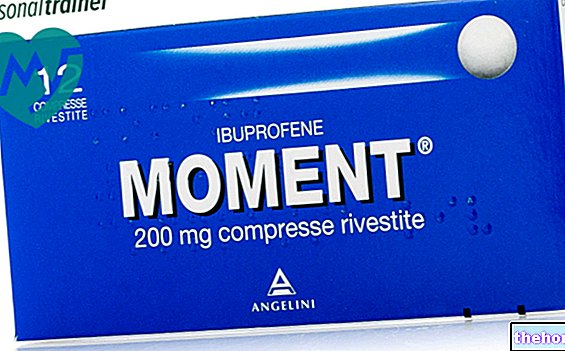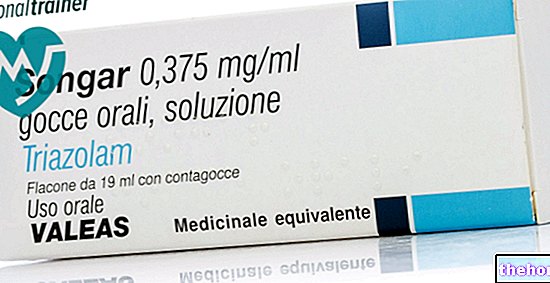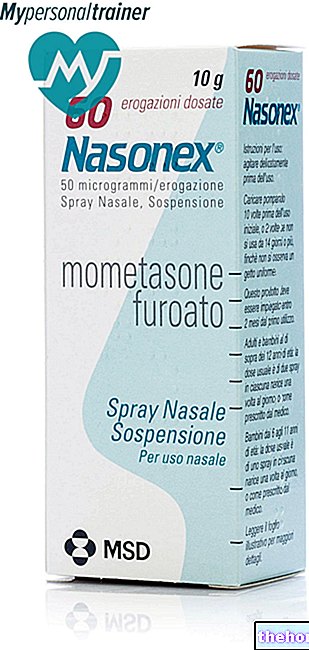Active ingredients: Tafluprost
SAFLUTAN 15 micrograms / ml Eye drops, solution
Indications Why is Saflutan used? What is it for?
What type of medicine is it and how does it work?
SAFLUTAN eye drops contain tafluprost, which belongs to a group of medicines called prostaglandin analogues.SAFLUTAN reduces the pressure inside the eye. It is used when the pressure inside the eye is too high.
What is this medicine used for?
SAFLUTAN is used to treat a type of glaucoma called open angle glaucoma, as well as a condition known as ocular hypertension in adults. Both conditions are linked to increased pressure within the eye and can ultimately impair vision.
Contraindications When Saflutan should not be used
Do not use SAFLUTAN if you are allergic to tafluprost or any of the other ingredients of this medicine (listed in section 6).
Precautions for use What you need to know before taking Saflutan
Talk to your doctor, pharmacist or nurse before using SAFLUTAN
Keep in mind that SAFLUTAN can have the following effects, some of which may be permanent:
- SAFLUTAN can increase the length, thickness, color and / or number of eyelashes and can cause unusual hair growth on the eyelids.
- SAFLUTAN can cause darkening of the skin around the eyes. Remove any residual solution from the skin. This will reduce the risk of skin darkening.
- SAFLUTAN can change the color of the iris (the colored part of the eye). If SAFLUTAN is used in one eye, the color of the treated eye may become permanently different from the color of the other eye.
Tell your doctor
- if you have kidney problems
- if you have liver problems
- if you suffer from asthma
- if you suffer from other eye diseases.
Children and adolescents
The use of SAFLUTAN is not recommended in children and adolescents below 18 years due to a lack of data on safety and efficacy.
Interactions Which drugs or foods can modify the effect of Saflutan
Tell your doctor or pharmacist if you are taking, have recently taken or might take any other medicines.
If you apply other medicines in the eye, wait at least 5 minutes between applying SAFLUTAN and applying the other medicine.
Warnings It is important to know that:
Pregnancy, breastfeeding and fertility
If you can become pregnant, you must use an effective method of contraception while being treated with SAFLUTAN. Do not use SAFLUTAN if you are pregnant. You must not use SAFLUTAN if you are breastfeeding.
Ask your doctor for advice.
Driving and using machines
SAFLUTAN does not affect the ability to drive or use machines. After the application of SAFLUTAN you may experience a transient blurring of your vision. Do not drive or use tools or machines until your vision is clear again.
Important information about some of the ingredients of SAFLUTAN
SAFLUTAN contains benzalkonium chloride. Benzalkonium chloride can cause eye irritation.
Contact lenses
Benzalkonium chloride is known to discolor soft contact lenses. Therefore, avoid contact with soft contact lenses.
Remove contact lenses before fitting and wait at least 15 minutes before putting them back on.
Dose, Method and Time of Administration How to use Saflutan: Posology
Always use this medicine exactly as your doctor or pharmacist has told you. If in doubt, consult your doctor or pharmacist.
The recommended dose is 1 drop of SAFLUTAN in each eye to be treated, once a day in the evening. Do not apply more drops and do not use the medicine more often than prescribed by your doctor. This could make SAFLUTAN less effective.
Only use SAFLUTAN in both eyes if your doctor has prescribed it. To be used only as an eye drop. Do not swallow.
Instructions for Use:
When starting a new bottle:
Do not use the bottle if the plastic film covering the cap and neck is missing or not intact. Remove the plastic film. Write down the date you opened the bottle in the space provided on the outer carton.
Whenever you use SAFLUTAN
- Wash your hands.
- Open the bottle. Take special care to prevent the tip of the dropper bottle from touching your eye, the skin around the eye or your fingers.
- Tilt your head back and turn the bottle upside down over your eye.
- You pull the lower eyelid down and look up. Apply light pressure on the bottle to make a drop of eye drops fall into the space between the lower lid and the eye
- Close your eye for a moment and apply pressure to the inner corner of the eye with your finger for about a minute. This helps to prevent the eye drops from flowing through the tear duct.
- Remove any residual solution present on the skin around the eye.
- Put the cap back on and close the bottle tightly.
If the drop does not enter the eye, repeat the operation.
If your doctor has instructed you to apply the drops in both eyes, repeat steps 3 to 7 for the other eye.
If you apply other medicines to your eyes, wait at least 5 minutes between applying SAFLUTAN and applying the other medicine.
If you forget to use SAFLUTAN, apply a single drop as soon as you remember, and then return to your normal dosing times. Do not use a double dose to make up for a forgotten dose.
Do not stop using SAFLUTAN without consulting your doctor. If you stop taking SAFLUTAN, the pressure in the eye will rise again. This can cause permanent damage to the eye.
If you have any further questions on the use of this medicine, ask your doctor, pharmacist or nurse.
Overdose What to do if you have taken too much Saflutan
If you use more SAFLUTAN than you should, this is unlikely to cause serious consequences. Apply the next dose at the usual time.
If the medicine is accidentally swallowed, ask your doctor for advice.
Side Effects What are the side effects of Saflutan
Like all medicines, this medicine can cause side effects, although not everybody gets them. Most of the side effects are not serious.
Very common side effects
The following effects may affect more than 1 in 10 people:
Effects on the eye:
- redness of the eye.
Common side effects
The following effects may affect up to 1 in 10 people:
Effects on the nervous system:
- headache
Effects on the eye:
- itchy eye
- eye irritation
- pain in the eye
- changes in length, thickness and number of lashes
- dry eye
- foreign body sensation in the eye
- discolouration of eyelashes
- redness of the eyelids
- small pinpoint areas of inflammation on the surface of the eye
- sensitivity to light
- increased lacrimation
- blurred vision
- reduction of the eye's ability to distinguish details
- discolouration of the iris (may be permanent)
Uncommon side effects
The following effects may affect up to 1 in 100 people:
Effects on the eye:
- discolouration of the skin around the eyes
- swollen eyelids
- tired eyes
- swelling of the surface membranes of the eye
- ocular discharge
- inflammation of the eyelids
- signs of inflammation inside the eye
- discomfort in the eye
- pigmentation of the surface membranes of the eye
- follicles in the surface membranes of the eye
- allergic inflammation
- abnormal sensation in the eye
Effects on the skin and subcutaneous tissue:
- unusual growth of hair on the eyelids.
Not known: frequency cannot be estimated from the available data
Effects on the eye:
- inflammation of the iris / uvea (middle layer of the eye)
- eyes that appear sunken
Effects on the respiratory system:
- worsening of asthma, shortness of breath
In very rare cases, some patients with severe damage to the clear layer at the front of the eye (cornea) have developed cloudy patches on the cornea due to calcium build-up during treatment.
Reporting of side effects
If you get any side effects, talk to your doctor, pharmacist or nurse. This includes any possible side effects not listed in this leaflet. You can also report side effects directly via the national reporting system at www.agenziafarmaco.gov. it / it / responsible. By reporting side effects you can help provide more information on the safety of this medicine.
Expiry and Retention
Keep this medicine out of the sight and reach of children.
Do not use this medicine after the expiry date which is stated on the bottle label and carton after "EXP". The expiry date refers to the last day of the month.
Do not store above 25 ° C.
Store in the original packaging.
To prevent infections, throw away the bottle 28 days after first opening and use a new one.
Do not throw any medicines via wastewater or household waste. Ask your pharmacist how to throw away medicines you no longer use. This will help protect the environment.
Deadline "> Other information
What SAFLUTAN contains
- The active ingredient is tafluprost. 1 ml of solution contains 15 micrograms of tafluprost. One bottle (2.5 ml) of eye drops, solution, contains 37.5 micrograms of tafluprost.
- The other ingredients are benzalkonium chloride (preservative), glycerol, sodium dihydrogen phosphate dihydrate, disodium edetate, polysorbate 80 and water for injections. Hydrochloric acid and / or sodium hydroxide are added to adjust the pH.
Description of what SAFLUTAN looks like and contents of the pack
SAFLUTAN is a clear and colorless liquid (solution), supplied in a pack of 1 or 3 clear plastic bottles, each containing 2.5 ml of solution.
The plastic bottles are closed with a screw cap.
Not all pack sizes may be marketed.
Source Package Leaflet: AIFA (Italian Medicines Agency). Content published in January 2016. The information present may not be up-to-date.
To have access to the most up-to-date version, it is advisable to access the AIFA (Italian Medicines Agency) website. Disclaimer and useful information.
01.0 NAME OF THE MEDICINAL PRODUCT -
SAFLUTAN 15 mcg / ML EYE DROPS, SOLUTION
02.0 QUALITATIVE AND QUANTITATIVE COMPOSITION -
One ml of eye drops, solution, contains 15 mcg of tafluprost.
One bottle (2.5 ml) of eye drops, solution, contains 37.5 mcg of tafluprost.
Excipient: 0.1 mg of benzalkonium chloride in 1 ml of eye drops, solution.
For the full list of excipients, see section 6.1.
03.0 PHARMACEUTICAL FORM -
Eye drops, solution (eye drops).
Clear and colorless solution.
04.0 CLINICAL INFORMATION -
04.1 Therapeutic indications -
Reduction of elevated intraocular pressure in open angle glaucoma and ocular hypertension.
As monotherapy in patients
• who have responded insufficiently to first-line therapy
• who do not tolerate or for whom first-line therapy is contraindicated
As an adjunct therapy to beta-blockers.
SAFLUTAN is indicated in adults ≥ 18 years.
04.2 Posology and method of administration -
Dosage
The recommended dose is one drop of SAFLUTAN in the conjunctival sac of the affected eye (s), once a day, in the evening.
The dose should not exceed a single daily application, as more frequent administrations may reduce the hypotensive effect on intraocular pressure.
Use in the elderly:
No dosage adjustment is required in elderly patients.
Pediatric population:
The safety and efficacy of tafluprost in children below the age of 18 have not yet been established. There are no data available.
Use in renal / hepatic impairment
Tafluprost has not been studied in patients with renal / hepatic impairment, therefore it should be used with caution in these patients.
Method of administration
To prevent possible contamination of the solution, patients should not touch their eyelids, surrounding areas or any other surface with the bottle applicator tip.
To reduce the risk of darkening of the eyelid skin, patients should wipe any residual solution from the skin. As with any other eye drops, nasolacrimal occlusion or gentle closing of the eyelid is recommended after administration. This may reduce the systemic absorption of ocular medicines.
If more than one topical ophthalmic medicinal product is used, each medicinal product should be administered at least 5 minutes apart.
04.3 Contraindications -
Hypersensitivity to the active substance tafluprost or to any of the excipients listed in section 6.1.
04.4 Special warnings and appropriate precautions for use -
Before starting treatment, patients should be informed about the possibility of eyelash lengthening, darkening of the eyelid skin and increased pigmentation of the iris. Some of these changes may be permanent and may cause differences in appearance between the two eyes in the case of only one eye is treated.
The change in iris pigmentation occurs slowly and may not be noticeable for several months. The change in eye color has been observed mainly in patients with mixed colored irises, such as blue-brown, gray-brown, yellow- brown and green-brown. In cases of unilateral treatment, the risk of permanent heterochromia is evident.
There is no experience with the use of tafluprost in patients with neovascular, narrow-angle, narrow-angle or congenital glaucoma. There is only limited experience with tafluprost in aphakic patients and in pigmentary or pseudoexfoliative glaucoma.
Caution is advised in the use of tafluprost in aphakic, pseudophakic patients with laceration of the posterior lens capsule or with anterior chamber lenses or in patients with known risk factors for cystoid macular edema or iritis / uveitis.
There is no experience in patients with severe asthma. Therefore, such patients should be treated with caution.
Benzalkonium chloride, commonly used as a preservative in ophthalmic products, has been reported to cause punctate keratopathy and / or toxic ulcerative keratopathy. Since SAFLUTAN contains benzalkonium chloride, careful monitoring is required in frequent or prolonged use in patients with dry eye or in conditions where the cornea is compromised.
SAFLUTAN contains benzalkonium chloride which may cause eye irritation. Avoid contact with soft contact lenses. Remove contact lenses before fitting and wait at least 15 minutes before putting them back in. Benzalkonium chloride is known to discolor soft contact lenses.
04.5 Interactions with other medicinal products and other forms of interaction -
No interactions are expected in humans, as systemic concentrations of tafluprost are extremely low following ocular dosing. Therefore, no specific interaction studies with other medicinal products have been performed with tafluprost.
In clinical studies, tafluprost was used concomitantly with timolol without evidence of interactions.
04.6 Pregnancy and breastfeeding -
Women of childbearing age / contraception
SAFLUTAN should not be used in women of childbearing potential, unless adequate contraceptive measures are in place (see section 5.3).
Pregnancy
There are no adequate data from the use of tafluprost in pregnant women.
Tafluprost can have harmful pharmacological effects on pregnancy and / or the fetus / newborn.
Studies in animals have shown reproductive toxicity (see section 5.3). Therefore, SAFLUTAN should not be used during pregnancy unless absolutely necessary (if no other treatment options are available).
Feeding time
It is unknown whether tafluprost or its metabolites are excreted in human breast milk. A rat study showed excretion of tafluprost and / or its metabolites in breast milk following topical administration (see section 5.3).
Therefore tafluprost should not be used during breastfeeding.
Fertility
In male and female rats, mating ability and fertility were not affected by intravenous doses of tafluprost up to 100 mcg / kg / day.
04.7 Effects on ability to drive and use machines -
Tafluprost does not affect the ability to drive or use machines. As with any ophthalmic treatment, in case of transient blurring of vision after instillation, the patient should wait for the vision to clear before driving or operating machinery.
04.8 Undesirable effects -
In clinical trials, over 1,400 patients received treatment with the preservative tafluprost, either as monotherapy or as an add-on to 0.5% timolol. The most commonly occurring treatment-related adverse event was ocular hyperaemia. This occurred in approximately 13% of patients who participated in clinical trials with preservative tafluprost in Europe and the USA. In most cases, this event was mild and led to discontinuation of therapy in an average of 0.4% of patients participating in the pilot studies. In a 3-month, phase III study conducted in the USA comparing the preservative-free formulation of tafluprost with the preservative-free formulation of timolol, ocular hyperaemia occurred in 4.1% (13/320) of patients treated with tafluprost.
The following treatment-related undesirable effects were observed in clinical studies with tafluprost in Europe and the USA after a maximum follow-up of 24 months:
Within each frequency class, undesirable effects are reported in descending order of frequency.
Nervous system disorders
Common (≥1 / 100, headache
Eye disorders
Very common (≥1 / 10): conjunctival / ocular hyperaemia
Common (≥1 / 100, eye itch, eye irritation, eye pain, eyelash changes (increase in length, thickness and number), dry eye, foreign body sensation in the eye, eyelash discolouration, eyelid erythema, keratitis superficial punctate (CPS), photophobia, increased lacrimation, blurred vision, reduced visual acuity and increased pigmentation of the iris.
Uncommon (≥1 / 1,000, edema of the palpebs, asthenopia, conjunctival edema, ocular discharge, blepharitis, presence of cells in the anterior chamber, ocular discomfort, distention outside the anterior chamber, conjunctival pigmentation, conjunctival follicles, allergic conjunctivitis and sensations abnormal in the eye.
Not known (frequency cannot be estimated from the available data): iritis / uveitis, deepening of the eyelid furrow.
Cases of corneal calcification have been reported very rarely in association with the use of phosphate-containing eye drops in some patients with significantly damaged corneas.
Respiratory pathologies
Not known (frequency cannot be estimated from the available data): exacerbation of asthma, dyspnoea
Skin and subcutaneous tissue disorders
Uncommon (≥1 / 1,000, hypertrichosis of the eyelids
Reporting of suspected adverse reactions
Reporting of suspected adverse reactions occurring after authorization of the medicinal product is important as it allows continuous monitoring of the benefit / risk balance of the medicinal product. Healthcare professionals are asked to report any suspected adverse reactions via the national reporting system. "address www.agenziafarmaco.gov.it/it/responsabili.
04.9 Overdose -
An overdose is unlikely to occur following ocular administration.
In the event of an overdose, treatment should be symptomatic.
05.0 PHARMACOLOGICAL PROPERTIES -
05.1 "Pharmacodynamic properties -
Pharmacotherapeutic group: antiglaucoma and miotic preparations, prostaglandin analogues
ATC code: S01EE05
Mechanism of action
Tafluprost is a fluorinated analogue of prostaglandin F2α. Tafluprost acid, the biologically active metabolite of tafluprost, is a highly potent and selective human prostanoid FP receptor agonist. Tafluprost acid has a 12-fold greater affinity for the FP receptor than latanoprost. Pharmacodynamic studies in monkeys indicate that tafluprost reduces intraocular pressure by increasing uveoscleral outflow of aqueous humor.
Pharmacodynamic effects
Experiments in normotensive monkeys and monkeys with ocular hypertension showed that tafluprost is an effective compound in reducing intraocular pressure. In the study evaluating the effect of tafluprost metabolites in lowering intraocular pressure, only tafluprost acid reduced intraocular pressure significantly.
In rabbits treated for 4 weeks with tafluprost 0.0015% ophthalmic solution once daily, optic nerve head blood flow was significantly increased (15%) from baseline as measured by laser speckle flowgraphy at days 14 and 28.
Clinical efficacy
The reduction of intraocular pressure begins 2 to 4 hours after the first administration and the maximum effect is reached approximately 12 hours after instillation. The duration of the effect is maintained for at least 24 hours. Pilot studies with a formulation of tafluprost containing the preservative benzalkonium chloride have shown that tafluprost is effective on its own and exhibits an additive effect when given as add-on therapy to timolol: in a study of 6 months, tafluprost showed a significant effect of reducing intraocular pressure of 6 to 8 mmHg at different times of the day, compared to 7-9 mmHg obtained with latanoprost. In a second 6-month clinical study, tafluprost reduced intraocular pressure from 5 to 7 mmHg compared to 4-6 mmHg obtained with timolol. The intraocular pressure lowering effect of tafluprost was maintained in the extension of these studies up to 12 months. In a study lasting 6 weeks, the lowering effect of tafluprost on intraocular pressure was compared to that of its solvent when used in addition to timolol. The additional intraocular pressure lowering effects compared to baseline values (measured after 4 weeks of timolol administration) were 5 to 6 mmHg in the timolol-tafluprost group and 3 to 4 mmHg in the timolol-vehicle group. Preservative and preservative-free formulations of tafluprost showed a similar effect of lowering intraocular pressure above 5 mmHg in a small crossover study with a treatment period of 4 weeks. Furthermore, in a 3-month study conducted in the USA comparing the preservative-free formulation of tafluprost with the preservative-free timolol formulation, the effect of tafluprost in lowering intraocular pressure was between 6.2 and 7.4 mmHg at times of different evaluations while that of timolol ranged between 5.3 and 7.5 mmHg.
05.2 "Pharmacokinetic properties -
Absorption
After once daily ocular administration of one drop of tafluprost 0.0015% eye drops in both eyes for 8 days, plasma concentrations of tafluprost acid were low and showed similar profiles on days 1 and 8. Plasma concentrations showed a peak at 10 minutes post dosing and decreased below the lower detection threshold (10 pg / mL) by one "hour after dosing. The mean Cmax values (24.4 and 31.4 pg / mL) and AUC0-last (405.9 and 581.1 pg * min / mL) were similar on days 1 and 8, indicating that a constant drug concentration was achieved during the first week of ocular dosing. No statistically significant differences were found. in the systemic bioavailability between formulations with and without preservative.
In a rabbit study, absorption of tafluprost into aqueous humor was comparable after a single ocular instillation of tafluprost 0.0015% ophthalmic solution with or without preservative.
Distribution
In monkeys, no specific distribution of radiolabelled tafluprost was observed in the iridociliar body or choroid, including the retinal pigment epithelium; this is indicative of a low affinity for the melanin pigment. In a whole organism autoradiography study. in rats, the highest concentration of radioactivity was observed in the cornea followed by the eyelids, sclera and iris. Outside the eye the radioactivity was distributed between the lacrimal apparatus, palate, esophagus and tract gastrointestinal, kidney, liver, gallbladder and urinary bladder.
The binding of acidic tafluprost to human serum albumin in vitro was 99% at 500 ng / ml of acidic tafluprost.
Biotransformation
The main metabolic pathway of tafluprost in humans, which has been tested in vitro, consists of hydrolysis to the pharmacologically active metabolite, tafluprost acid, which is further metabolised by glucuronidation or beta oxidation. The beta oxidation products, 1,2-dinor and 1,2,3,4-tetranor acids of tafluprost, which are pharmacologically inactive, they can be glucuronidated or hydroxylated. The cytochrome P450 (CYP) enzyme system does not participate in the metabolism of tafluprost acid. Based on the study in rabbit corneal tissue and with purified enzymes, the major esterase responsible for "hydrolysis of" ester to tafluprost acid is carboxylesterase. Butylcholinesterase, but not acetylcholinesterase, can also contribute to hydrolysis.
Elimination
Following once daily administration of ³H-tafluprost (0.005% ophthalmic solution; 5 mcl / eye) for 21 days in both eyes in rats, approximately 87% of the total radioactive dose was recovered in the excreta. total excreted in the urine was approximately 27-38% and approximately 44-58% of the dose was excreted in the faeces.
05.3 Preclinical safety data -
Non-clinical data reveal no special hazard for humans based on conventional studies of safety pharmacology, repeated dose systemic toxicity, genotoxicity and carcinogenic potential. As with other PGF2 agonists, repeated dose topical ocular administration of tafluprost in monkeys it induced irreversible effects on the pigmentation of the iris and a reversible increase in the width of the palpebral fissure.
An "increased uterine contractility in vitro The uterotonic activity of tafluprost has not been studied in human uterus preparations.
Reproductive toxicity studies were performed in rats and rabbits following intravenous administration. No adverse effects on fertility or early embryonic development were observed in rats at systemic exposures greater than 12,000 times the maximum clinical exposure based on Cmax or greater than 2,200 times that based on AUC.
In conventional embryo-fetal development studies, tafluprost induced reductions in fetal body weight and increased post-implantation losses. Tafluprost increased the incidence of skeletal abnormalities in the rat and the incidence of cranial, cerebral and spinal malformations in the rabbit. In the rabbit study, plasma levels of tafluprost and its metabolites were below the quantification level.
In a pre- and postnatal development study in rats, increased neonatal mortality, reduced body weight and delayed auricle deployment were observed in offspring at tafluprost doses greater than 20 times the clinical dose.
Experiments conducted in rats with radiolabelled tafluprost showed that approximately 0.1% of the dose applied topically in the eye passed into the milk. Since the half-life of the active metabolite (tafluprost acid) in plasma is very short (undetectable after 30 minutes in humans), most of the radioactivity was probably due to metabolites with little or no pharmacological activity. Based on the metabolism of the drug and natural prostaglandins, very low oral bioavailability is expected.
06.0 PHARMACEUTICAL INFORMATION -
06.1 Excipients -
Benzalkonium chloride
Glycerol
Sodium dihydrogen phosphate dihydrate
Disodium edetate
Polysorbate 80
Hydrochloric acid and / or sodium hydroxide (for pH adjustment)
Water for injections
06.2 Incompatibility "-
Not relevant
06.3 Period of validity "-
3 years.
After first opening the bottle: 28 days.
06.4 Special precautions for storage -
Do not store above 25 ° C.
Store in the original packaging.
06.5 Nature of the immediate packaging and contents of the package -
Transparent polypropylene bottle with polypropylene dropper tip and high density polyethylene cap. Each bottle has a filling volume of 2.5ml.
The following pack sizes are available: cartons containing 1 or 3 bottles of 2.5 ml.
Not all pack sizes may be marketed.
06.6 Instructions for use and handling -
Unused medicine and waste derived from this medicine must be disposed of in accordance with local regulations.
07.0 HOLDER OF THE "MARKETING AUTHORIZATION" -
MSD Italia S.r.l.
Via Vitorchiano, 151 - 00189 Rome
08.0 MARKETING AUTHORIZATION NUMBER -
15 mcg / ML EYE DROPS, SOLUTION
1 bottle 2.5 ml AIC n. 038926010
15 mcg / ML EYE DROPS, SOLUTION
3 bottles of 2.5 ml AIC n. 038926022
09.0 DATE OF FIRST AUTHORIZATION OR RENEWAL OF THE AUTHORIZATION -
Date of first authorization: May 2010
Last renewal date: February 2014
10.0 DATE OF REVISION OF THE TEXT -
November 2014




























